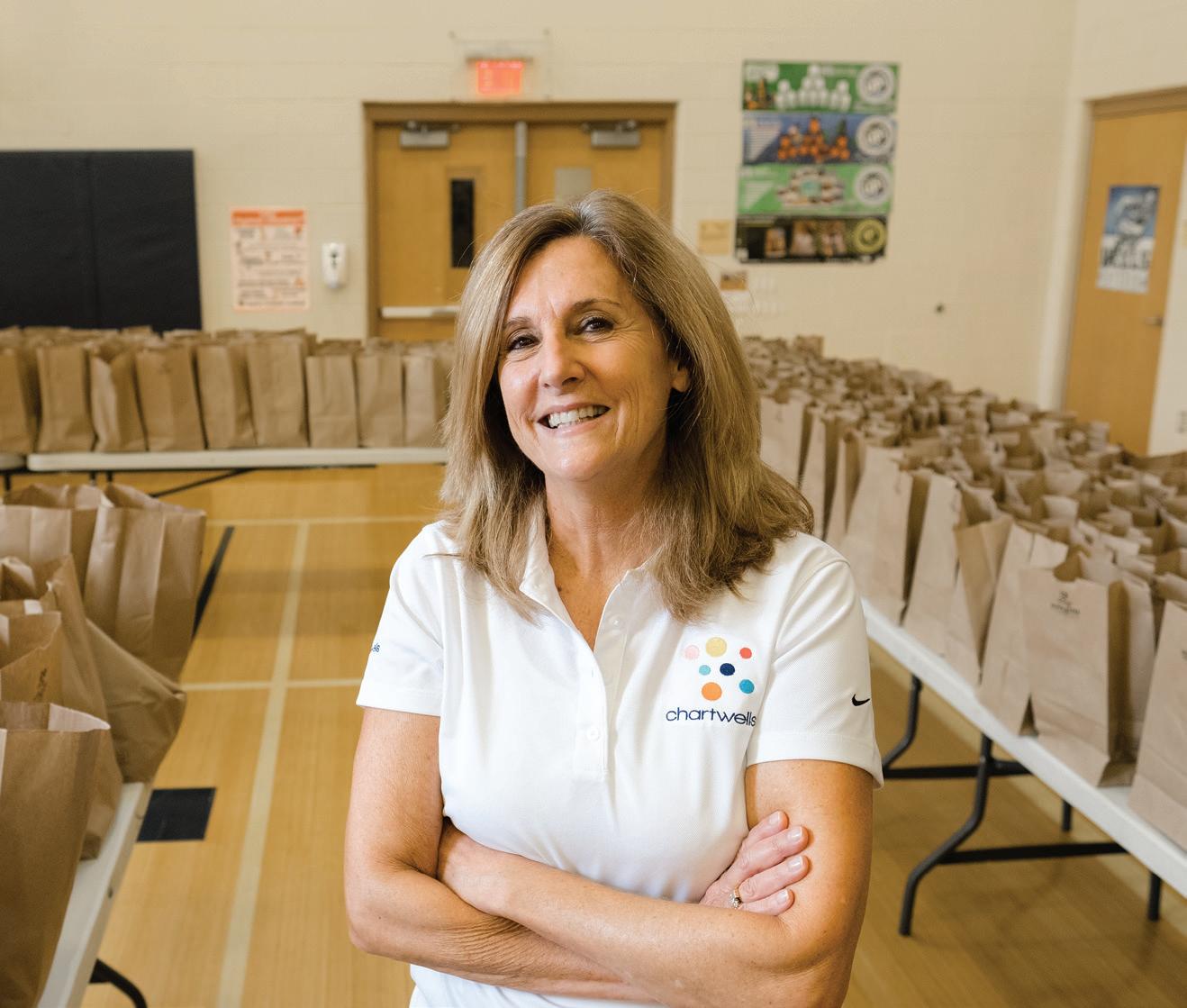
2 minute read
Feed the Need
SCHOOLS feed t h e need
Liz Cartano and her team sprang into action when the pandemic started to ensure students were fed. They haven’t stopped. By Courtney Hayes | Photo by Cornell Watson hartwells School Dining Services Director of Dining Liz Cartano had to think very differently about school lunches when Chapel Hill-Carrboro City Schools transitioned to learning from home on March 16. She and her team of 85 staff and volunteers began delivering meals to pickup sites with the Food for Students program, originally called Food for the Summer. “It’s taken the whole community to come together,” Liz says, referring to the volunteer office, police department, faith-based organizations and more groups that help ensure more than 600,000 meals – and counting – make it safely into the hands of students. We asked Liz to share insights on the process.C PIVOTING “We had a packaged concept [from our original Food for the Summer program] that we could pull off the shelf as needed that already had the logistics figured out. We had a website where we could point people to find out pickup locations and times. … The biggest change [since we started] is that we now have access to buses. … When people see the buses, it gives them a warm and fuzzy feeling.” LINKING UP “Connecting with students has been a bit of a process. We started out with a bunch of different housing complexes where we knew some families might be struggling. We connected with social workers who knew where students might be struggling. The [Refugee Support
Center] helped us find a lot of our Burmese families. We’d also drive by an apartment complex, see how many of our students lived there, and then we’d add it on as a delivery site.”
SPECIAL DELIVERY “When we identified people who we couldn’t get out to a [delivery] site, we started building culinary boxes similar to HelloFresh and would go out to communities that we were not tapping into after hours and deliver these food boxes. … We’re also testing door-to-door delivery. We piloted that recently and found we had more people get food. It helped
When people see the buses, it gives them a warm and fuzzy feeling. with students who are home alone or have parents who may be working.”
MORE THAN A MEAL “We needed to be more than just about food. We could see the boredom setting in [with students]. So we also started doing some enrichment activities. … We put out 700 culinary kits that included everything kids needed to make blueberry muffins. We had [Durham-based literacy nonprofit] Book Harvest giving out books. We didn’t want to put everything on one entity. We took a part to make it all happen. It’s a community effort.” CHM










